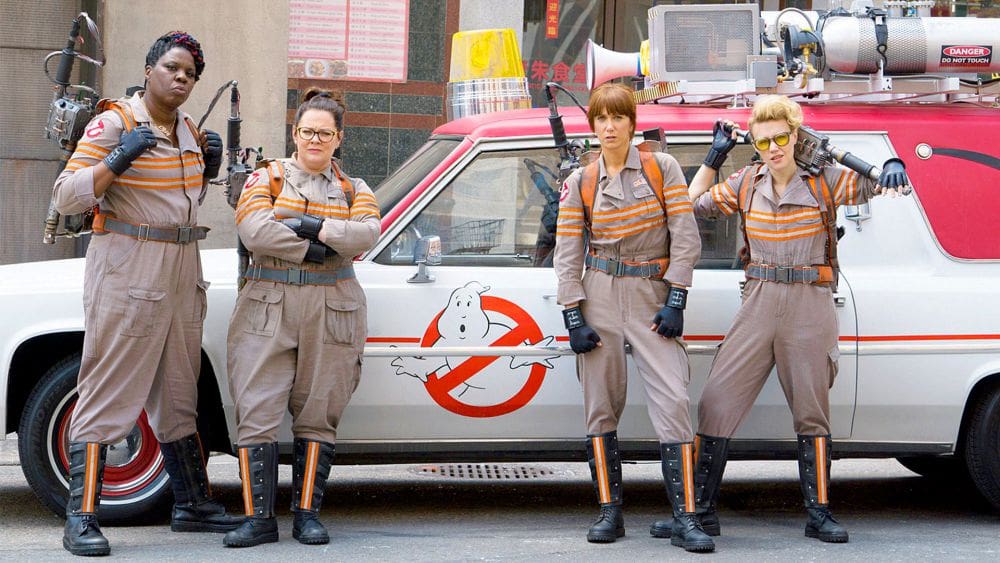Ghostbusters & The Modern Landscape of Women at Work
July 20, 2016 by Meredith Brandt
The sound of the Ghostbusters theme song provokes an immediate reaction from many; the classic 1984 comedy starring Bill Murray, Dan Aykroyd, and Harold Ramis as the famed ghost hunting crew has touched multiple generations and influenced many a movie to come. Ghostbusters grew and grew as audiences fell more and more in love with the franchise. Praise could be read far and wide, that is, until the announcement of the latest reboot.
Columbia Pictures
The third Ghostbusters film opened this weekend despite an overwhelming amount of criticism from audiences who hadn’t even seen the movie yet. The movie has since garnered some great reviews and grossed $65 million worldwide in its opening weekend. But the landscape for criticism remains. The trailer for the movie on YouTube is the most disliked trailer in YouTube history. On Twitter, Ghostbusters star Leslie Jones has faced a barrage of misogynistic and racist attacks because of the film. The internet has spewed nothing but hate for the new movie. This Ghostbusters backlash has far less to do with the actual content of the movie and far more to do with its stars.
The Ghostbusters saga is the latest pop culture example of gender inequity in the workforce. It stands as an example of the inequities called into play when women assume roles traditionally held by men. This Ghostbusters crew may just be our modern Rosie the Riveter — but in today’s workforce, the shifting paradigm is evidently something that many people in the world are still wary to face.
It is no new news that women are often viewed as lesser than men in the workforce. A pay gap exists across industries and experience levels. The pay difference often has to do with the fact that many women work in fields that pay less. But even when a woman enters (and succeeds in) a traditionally male field, she makes less than her male counterparts. One of the most comprehensive studies conducted on gender biases in the workforce suggests that this pay disparity may be connected to an inherent human bias where people place a lower value on work done by women. The same study found that in fields that shifted from male- to female-dominated, median wages dropped anywhere from 18 to 57 points.
Economically, socially, politically, culturally: women who work in traditionally male roles face misogyny in a variety of ways. Female surgeons mistaken for nurses, female office workers lumped into secretarial roles, female journalists missing from the news room. Just doing a great job at work isn’t enough to change the way women are treated; women are trying to combat their career hurdles in any way they can.
One recent way is with social media. While social media is where many misogynistic messages lurk, it is also where many people are coming together to make a difference. The #ILookLike hashtag sparked a conversation that continues on today. Started by successful engineer Isis Wenger, the Twitter hashtag has been used by women across industries. The hashtag is used to prove there are women out in the workforce who don’t conform to job stereotypes. #ILookLike is just one social media campaign against gender stereotyping. Platforms are being used to showcase women in the workforce, and, while internet backlash is often common, the community created by the hashtag is able to stand up to online haters as a unit.
When a big commercial movie like Ghostbusters causes controversy, it can serve as a catalyst for discussion of widespread societal problems. Female inequity has always been a factor of the workforce, but perhaps a cultural phenomena like Ghostbusters is the best tool to use to continue balancing the playing field for women working in traditionally male fields.
More from Careerminds
In need of outplacement assistance?
At Careerminds, we care about people first. That’s why we offer personalized talent management solutions for every level at lower costs, globally.



